
views
Making a Simple Trick Paper Airplane

Fold an 8 ½ in x 11 in (21.5 cm by 28 cm) piece of paper in half lengthwise. Using plain printer paper is best -- if you pick paper that is thicker, it will fall too easily, and if you pick thinner paper, it won't be able to gather enough momentum to really fly. After you fold the paper, run your finger along the crease to secure it.

Unfold the piece of paper. Just unfold the piece of paper the same way you folded it. Make sure the crease is prominent and runs all the way down the paper.

Fold the top two corners to create two triangles that meet at the crease. You should create two similar right triangles with edges that meet right along the line of the crease. They should be as close to the same size as possible.
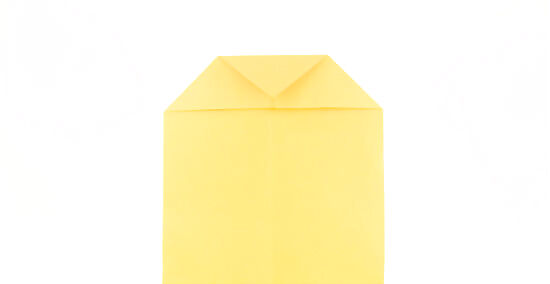
Fold the top corner to the bottom of the folded part of the paper. The tip of the top corner should move down to touch the bottom of the edges where the two triangles meet.

Fold the paper in half lengthwise again. Fold the paper in half lengthwise just as you did in the beginning. Fold it along the same crease. You can reinforce the crease again, if you like.
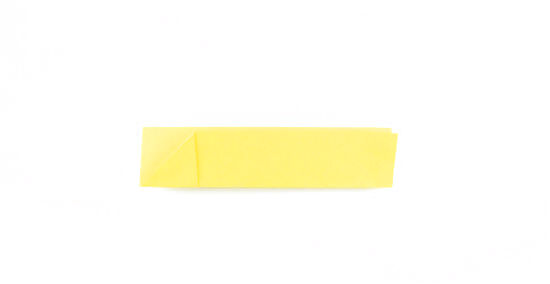
Fold the wings over. Once the paper is folded in half, grab one side by the outer edge of the diagonal part and fold it over toward the middle crease, so that you see a small triangle with a bottom edge that touches the middle crease. Turn the paper over and do the same on the other side. You will create a long, rectangular shape with triangles on either side of the plane. Try to make the handle .4 inches (1 cm) long at most.

Hold the airplane by the handle and fly it. Grab the airplane by the handle in the middle and gently throw it upward. You'll see that this plane creates loops instead of flying straight ahead. Keep playing with it -- experiment to see how throwing the plane faster or slower affects the movements of the plane.
Making a Trick Paper Airplane

Fold an 8 ½ in x 11 in (21.5 cm by 28 cm) piece of paper in half lengthwise. Using plain printer paper for this trick paper airplane is best. If you pick paper that is thicker, it will fall too easily, and if you pick thinner paper, it won't be able to gather enough momentum to really fly. It's important to be precise when you try to fold the paper exactly in half. After you're done, run your finger along the crease to make sure that it's secure.

Unfold the piece of paper. Once you've secured the crease, just unfold the paper in the same exact way that you folded it. You'll be left with a piece of paper with a vertical crease running down its center.

Fold the top two outer corners inwards. This will create two triangles that meet along the middle crease of the plane. Running your fingers along the outer edges of the triangles will reinforce the folds.
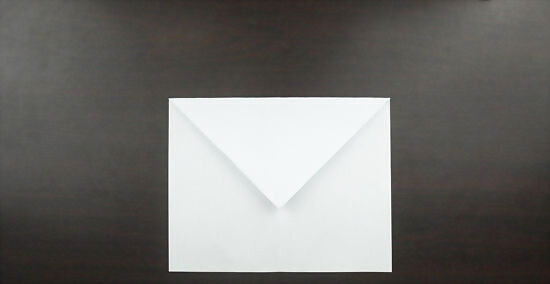
Fold the top corner down. Take the top corner of the paper and fold it down along the line created by the bottom edges of the two triangles. You'll be creating a mirror image of the top triangle over this line. You'll have a triangle with a corner that is pointing downward instead of upward.

Fold the top two corners over so that they meet about an inch (2.5 cm) above the bottom flap. The bottom corner of the big triangle should still be peeking below the folds created by the top two corners. Just the tips of the triangles created by the top two corners should meet an inch (2.5 cm) above the bottom corner of the big triangle below them.
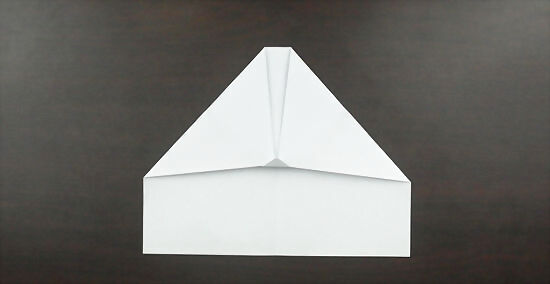
Fold the little flap up. Just take the little flap below the two folded triangles and fold it upward, above the little space where the two triangles met. Make sure that the creases on the sides of the airplane are nice and firm after you do this by running your finger along their edges.

Fold the plane lengthwise in the opposite direction. Fold the plane lengthwise in the opposite direction of the way you folded it in the beginning. You should be able to see the little triangles you created on the outer sides of the plane after this fold.

Fold each wing down so its bottom edges run about ½ in (1.25 cm) below the bottom edges of the plane. Fold one wing down so that it gradually slopes downward, with the thickest part of the wing being at the bottom and falling below the bottom edge of the plane. Then, fold the other wing down the same way to meet the first wing. This will make the plane as aerodynamic as it can be and can make it fly long distances and loop in the air.

Fly the plane. Grab the handle of the plane and gently throw it upwards and watch it glide long distances and spin in the air.
Making Other Trick Paper Airplanes
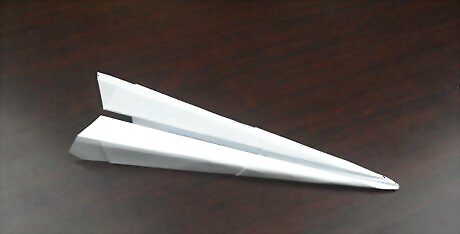
Make an incredibly fast paper airplane. This plane can glide faster than lightening if you fold it correctly.

Make a loop de loop paper airplane. This plane will do the loop de loop trick every time. All you need is some paper, throwing technique, and a stapler.

Make the Stunt King paper airplane. This paper plane can cover a great distance while performing a variety of tricks.

Make a boomerang airplane. Make an airplane that will return to you like a boomerang.



















Comments
0 comment